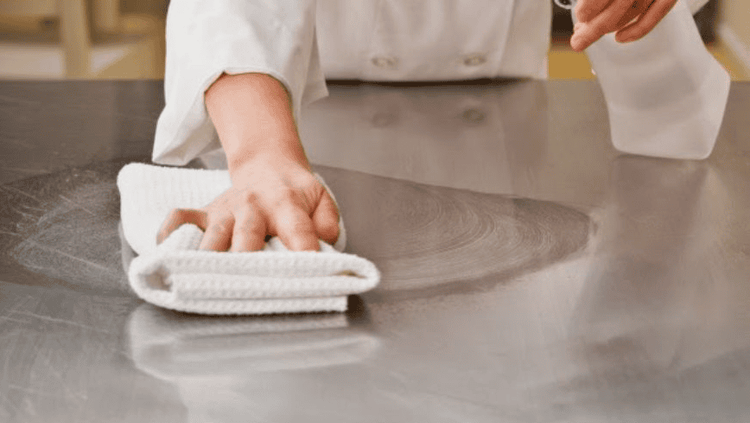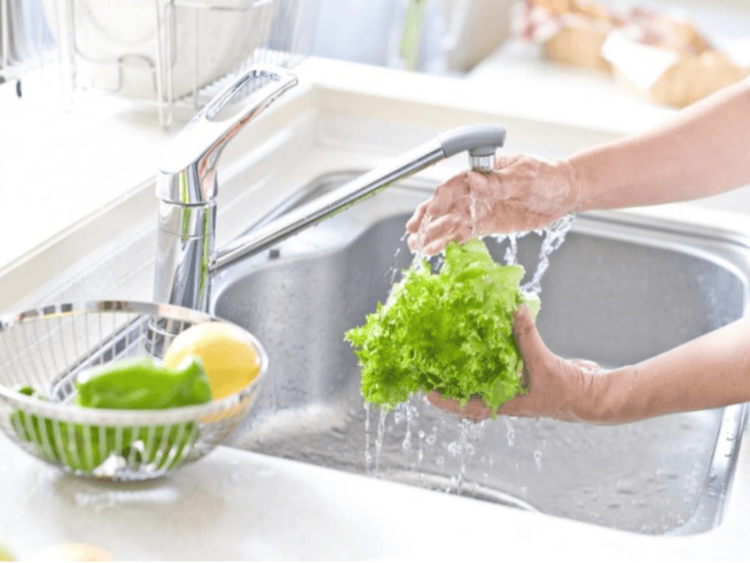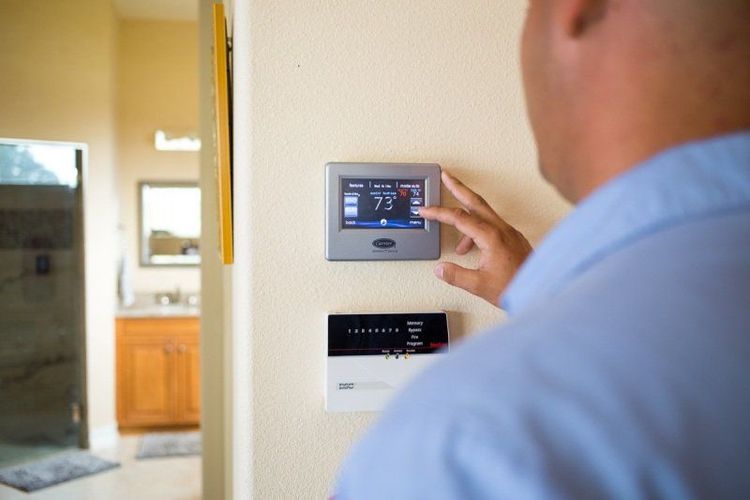This is an automatically translated article.
Severe diarrhea, fever, vomiting, poisoning and stomach cramps are all symptoms of foodborne illness that can be caused by kitchen germs.
1. Invisible Kitchen Germs The truth is we can't see or smell most of the kitchen germs that live on food. They don't even change the color or texture of a dish. We often think of three times when bacteria get into food:
Before: it gets contaminated before we even bring the food home. In time: it gets contaminated sometimes during preparation and cooking. After: it becomes contaminated after preparation and/or during storage. 2. Steps to avoid bacteria when cooking There are many ways you can prevent bacteria in your food, starting with these steps.
Step 1: Keep food clean to control kitchen germs
For a cleaner kitchen, here are a few tips:
Sponges and towels: The kitchen provides a warm and humid environment , with a lot of surface area, and they are difficult to clean and sanitize. Replacing sponges and towels with a plastic brush may be slightly better at fighting bacteria. If you will be using sponges and towels, wash them weekly in very hot water. The CDC suggests microwaving sponges every night for 30 seconds or putting them in the dishwasher to kill more than 99% of bacteria.

Khăn lau cần được giặt thường xuyên bằng nước nóng
Table tops and utensils: Before you start taking out food to prepare, make sure all utensils and countertops have been cleaned with hot soapy water before and after use. If you want a good sanitary cleaning, wash them with a diluted bleach solution at a ratio of one teaspoon of bleach to one quart of hot water. If you use antibacterial wipes to clean your countertops, throw them away after one use. Kitchen sink: Sanitize, drain, and dispose of as often as possible using a diluted bleach solution of one teaspoon to one quart of hot water. Step 2: Reduce kitchen germs
Try these tips to help keep the maximum bacteria out while you shop:
Meat: Wrap: Put any meat you buy in a plastic bag before putting it in the basket row. This keeps raw meat juices from dripping on fresh foods in the grocery cart. Juice: Don't buy a bloated bottle of juice. Bloating is usually a sign that at some point the juice wasn't kept at the proper temperature and it has now gone bad. Manufacturing: Some products can become contaminated with salmonella , shigella or E. coli during growing, harvesting, processing, storage or transportation. It is especially important that you wash spinach, lettuce, tomatoes, sprouts, and melons before handling or slicing them.

Người nội trợ nên rửa sạch rau trước khi chế biến chúng
Canned foods: Don't know where those cans have gone, so wash them with hot soapy water before opening. Otherwise, any particles or bacteria that exist on the lid will inevitably fall in the food while opening. Perishables: If you have perishable groceries that are likely to be left in the car for more than an hour, refrigerate along with some ice cubes to keep the food cold until it can be placed in the fridge or freezer bronze. Step 3: Kitchen germs and food preparation
There is no reason to fear kitchen germs if we practice safe food preparation habits.
Hand washing: Failure to wash hands is the most common cross-contamination between raw meat, poultry, seafood, eggs, undercooked vegetables, and ready-to-eat foods. The habit of washing hands longer and more often is advisable. Rub hands vigorously together for at least 20 seconds with hot soapy water. Wash hands thoroughly with soap and water (warm or cold) and dry before handling food, after handling raw foods - including meat, fish, eggs and vegetables - and after touching bins, going to the toilet birth, blow your nose, or touch animals (including pets) Cutting Board: Invest in three colorful plastic cutting boards, with one color for each food. For example, designate a green mat for slicing fruits and vegetables, a white mat for slicing fish, and a red carpet for slicing red meat products. Raw meat: Don't let raw meat bacteria transfer to other foods in the kitchen. Avoid cross-contamination by keeping raw meat, and any kitchen utensils that come in contact with it, completely separate from all other foods.

Thịt sống cần được để tại vị trí cách biệt với những thực phẩm khác
Defrost and marinate: Marinate meat in the refrigerator, do not leave it outside at room temperature. Thaw food in the same way in the refrigerator. You can also defrost foods under cold running water, or in the microwave on defrost mode. Eggs: Eating undercooked eggs carries a risk of Salmonella Enteritidis. Eliminate the risk and kill bacteria by cooking eggs or foods containing eggs, or using pasteurized eggs. Egg substitutes that you buy in the store are usually pasteurized and therefore pose no risk if consumed uncooked. Wash produce: Wash all fruits and vegetables under running water before eating, cutting, or cooking, unless they are packaged and marked "prepared". Peel or thoroughly wash the hard outer skin of fruits such as melons and cucumbers with a clean product brush and warm soapy water before you cut them, in case bacteria are present on the skins. Cook thoroughly: Finally, remember that thoroughly cooking foods helps kill bacteria. Step 4: Prep tip to fight kitchen germs
There are a few kitchen hacks that can help keep leftovers safe for another delicious meal:
Time: Bacteria can multiply Rise quickly on cooked food left for more than two hours at room temperature. Refrigerate these foods in a timely manner. Avoid room temperature: Bacteria multiply rapidly between 40 degrees F and 140 degrees F. So it's best to keep hot cooked foods at 140 degrees or higher, and cold cooked foods at 40 degrees or low than.

Nhiệt độ phòng phù hợp giúp hạn chế vi trùng nhà bếp
Refrigerator and freezer temperatures: Your refrigerator should be set at 40 degrees Fahrenheit or below and your freezer at 0 degrees Fahrenheit. Leftovers: Store leftovers in shallow dishes so they can cool down faster and reach the desired refrigeration temperature faster. Avoid packing the fridge for extra space left. To keep food at a safe temperature, cool air needs to circulate. Four steps can help you keep kitchen germs at bay, prevent bacteria from growing on food, and help keep you, your family, and what you eat as healthy as possible.
If there is a need for consultation and examination at the Hospitals of the National Health System, please book an appointment on the website to be served.
Articles refer to sources: nhs.uk, webmd.com
Please dial HOTLINE for more information or register for an appointment HERE. Download MyVinmec app to make appointments faster and to manage your bookings easily.













